 Yellow-chinned Spinetail (Certhiaxis cinnamomea)
Yellow-chinned Spinetail (Certhiaxis cinnamomea)
 Yellow-chinned Spinetail (Certhiaxis cinnamomea)
Yellow-chinned Spinetail (Certhiaxis cinnamomea) |
 |
| Pictures (click on them to enlarge) | ||
|---|---|---|
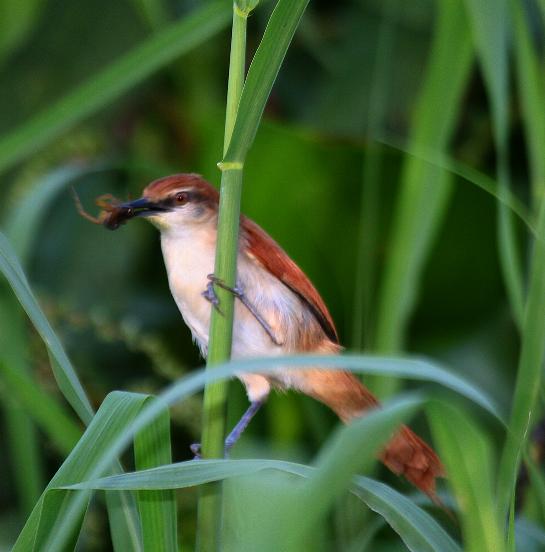 © Pieter Verheij | 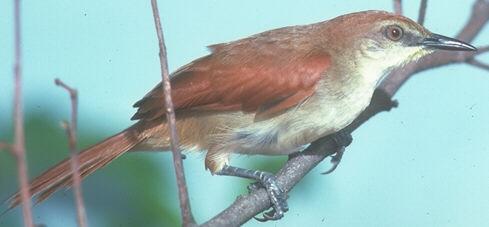 © John S. Dunning | 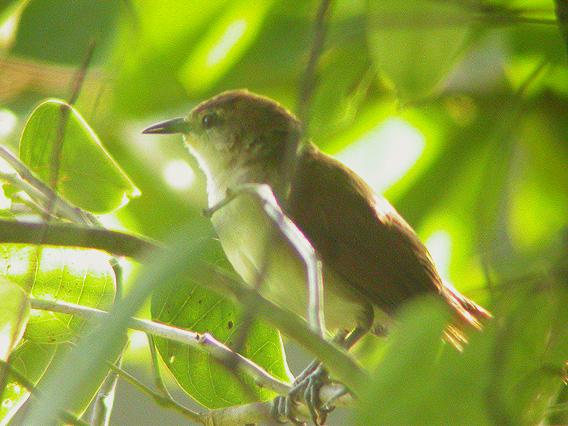 © Erik Toorman |
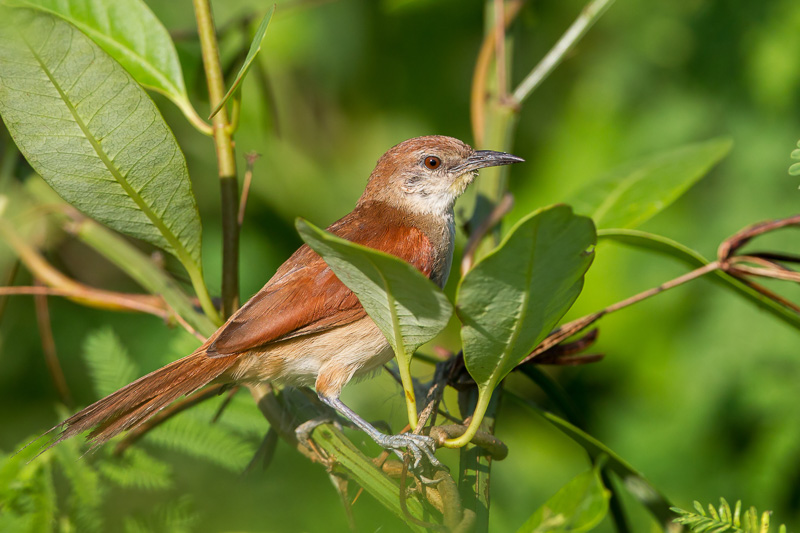 © Paul van Giersbergen | 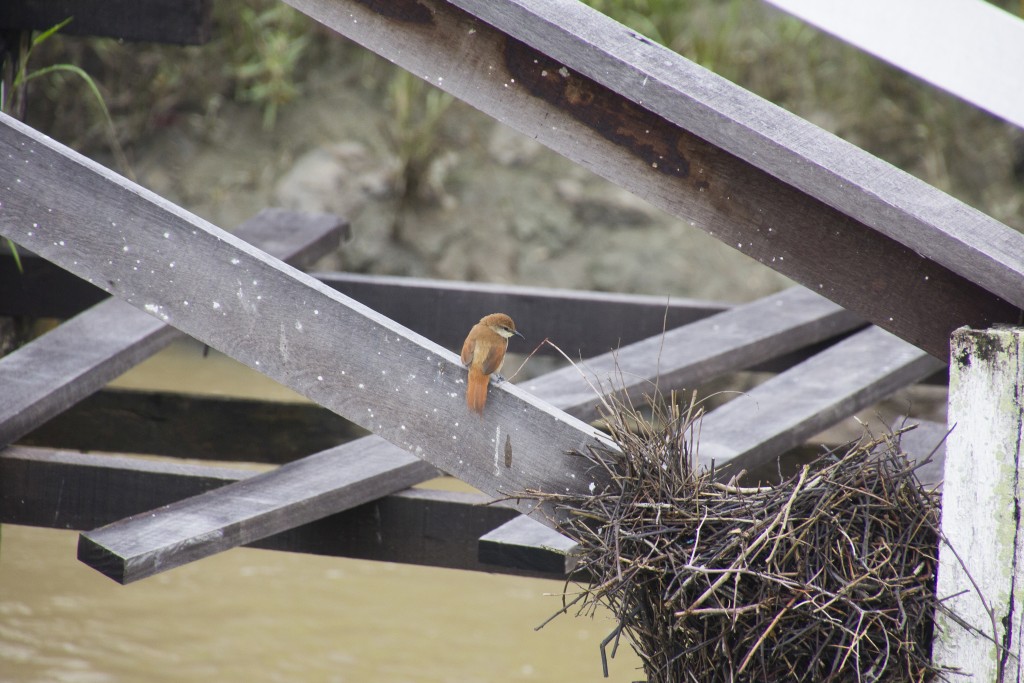 © Harry Valk | 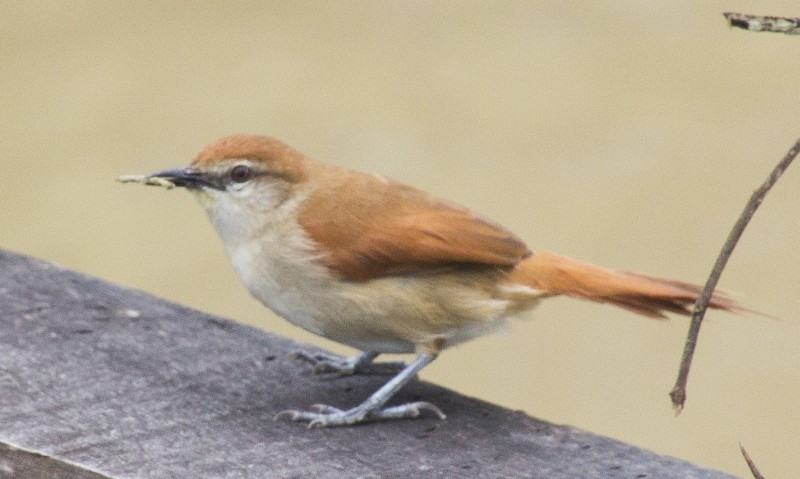 © Harry Valk |
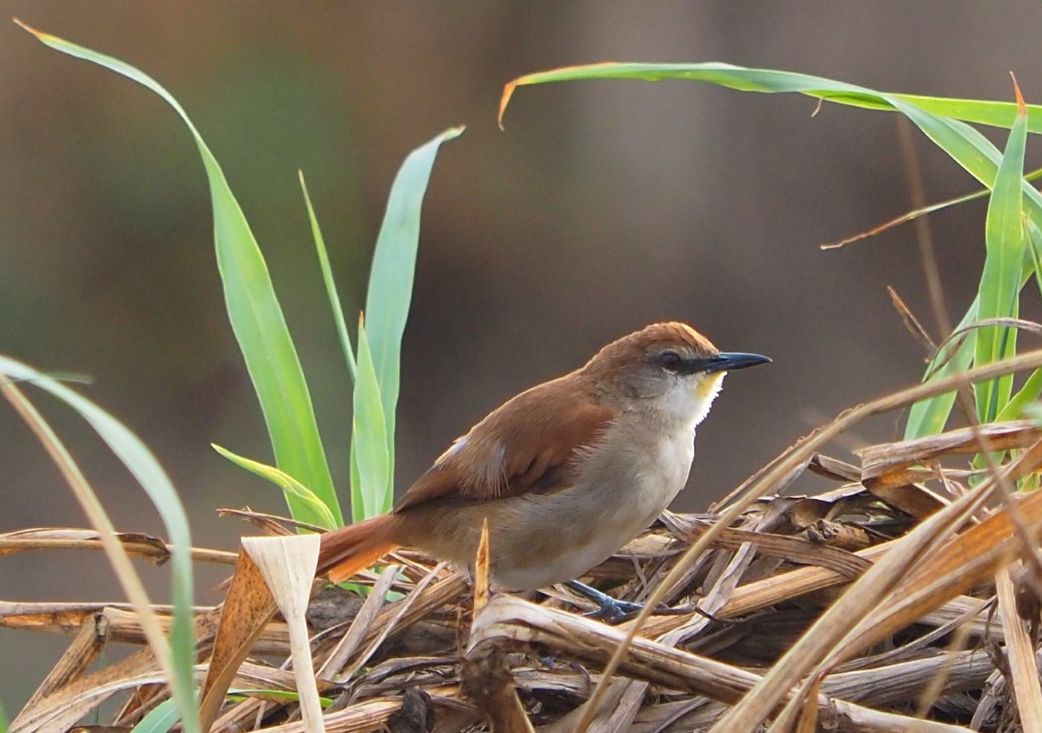 © Hans Dankbaar | 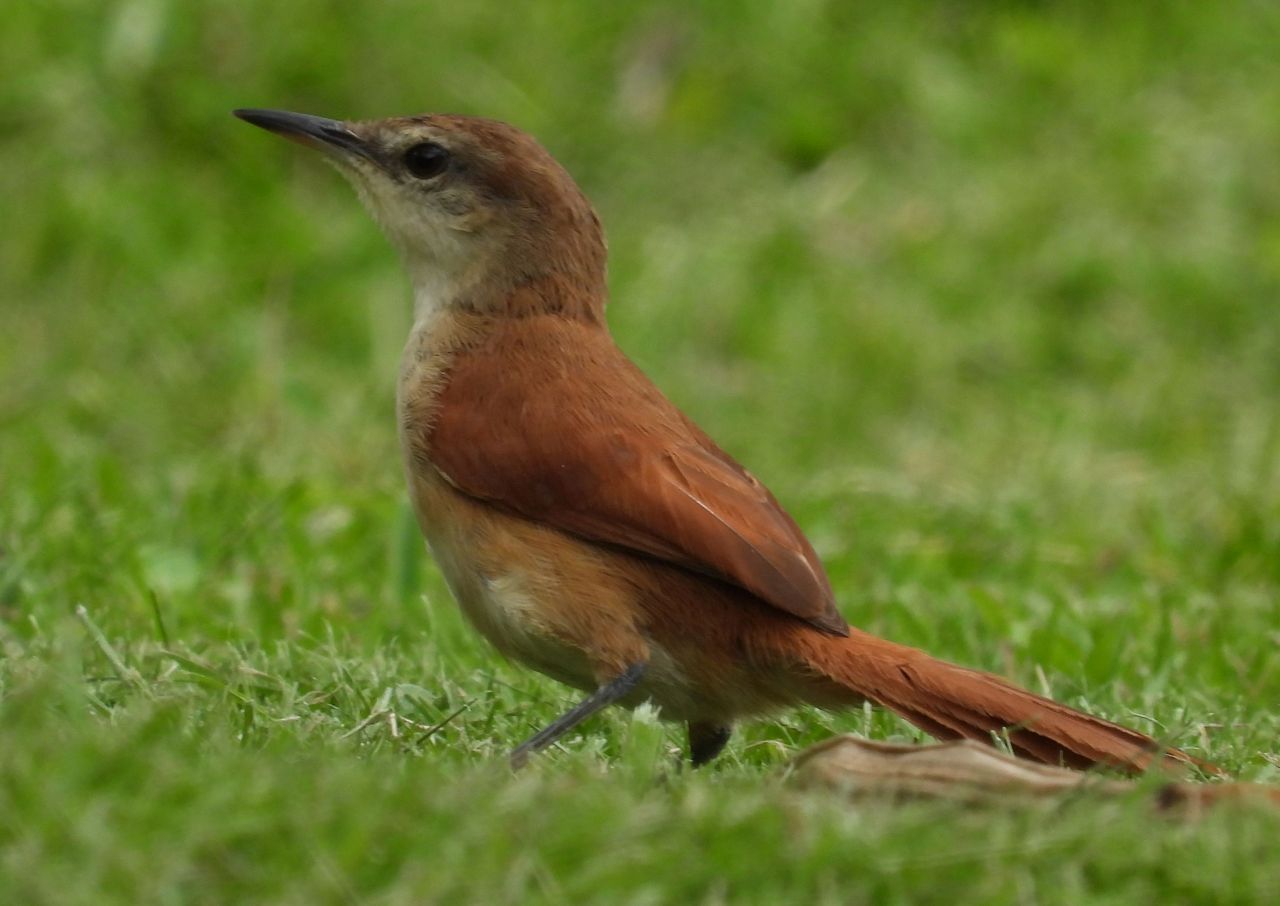 © Raoul Ribot |  © Erik Toorman |
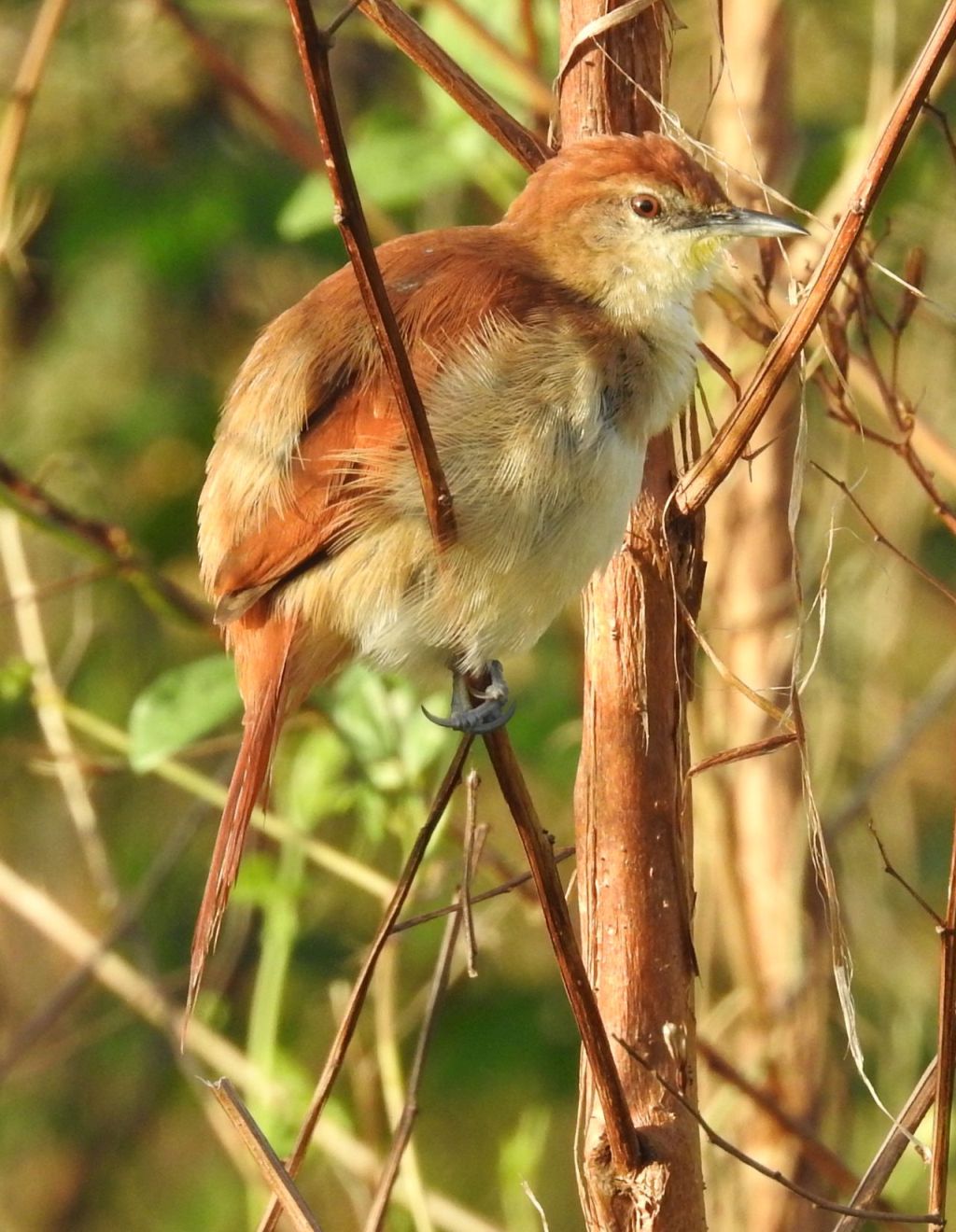 © Dominiek Plouvier |
| Yellow-chinned Spinetail: A small and inconspicious bird, that is better known for its song and nest then for its looks. It lives hidden between long grasses along watercourses and in marshes. Often the most you see, is the movement of the grass, while you hear its unmistakable song: long and vibrating, it lasts for more then ten seconds and fades away at the end, as if the spinetail were out of breath. Good places to hear it are at Leiding, Weg naar Zee or along the Vijfde Rijweg. If you can imitate the sound of the yellow-chinned spinetail (link below) it will come near. Otherwise it is rather shy. The nest is big with respect to the bird. It is made from rather thick twigs, it is round with a long entrance tube. It is hard to imagine a small bird making such a building for itself. The Yellow-throated Spinetail eats insects that it find between the grass stalks, often feeding in couples with some young, just out of the nest. The young do not yet have a yellow marking on their throat, but even with the adults this is difficult to see. Sometimes an egg of a striped cuckoo gets into their nest. How a female cuckoo performs such an act (passing the entrance tube), I don't know. First photo by Pieter Verhey of a bird with an spider, maybe going to its nest, in January 2007 and one by J.S. Dunning, both made in Suriname and a picture made by Erik Toorman in July 2007 at Pomona in Suriname. At Leonsberg Paul van Giersbergen photographed the spinetail in September 2014 with a clearly visible yellow patch on the chin. Dominiek Plouvier made the two videos. |
| Birdsounds (click on them to listen) | ||
|---|---|---|
| Sound recording of a Yellow-chinned Spinetail © Jan Hein Ribot |
| Video (click the link or the 'play'-button to see) | ||
|---|---|---|
| Video recording of a Yellow-chinned Spinetail © ; | Video recording of a Yellow-chinned Spinetail © ; |
|
|
||||||||||||||||||||||||||||||||||||||||||||
| Observations through the year | Observations of breeding through the year |
|---|---|
| The 742 reported observations of this bird in Suriname, mainly for the last 50 years up to 2018, have been grouped by month. More birds on one day are counted as one observation. Of course, if the graph should depict the total number of birds seen, the differences between the months could be much more pronounced. | The 225 reported breeding observations of this bird in Suriname. Most observations are about nest with eggs, some about fledglings, or feeding at a nest or the building of a nest. Of the about 5000 nests and eggs found for all species together, about 1/3 comes from the egg collection of Penard between 1896 and 1905. For some reason most collecting then was done in the first half of each year, so the shown distribution does not necessarily reflect the actual breeding preferences. The main dry season in Suriname is reckoned to be from half August to the end of November, the main wet season from half April to half August, but the the timing of begin and end does vary from year to year. Around March a second dry season often occurs. |